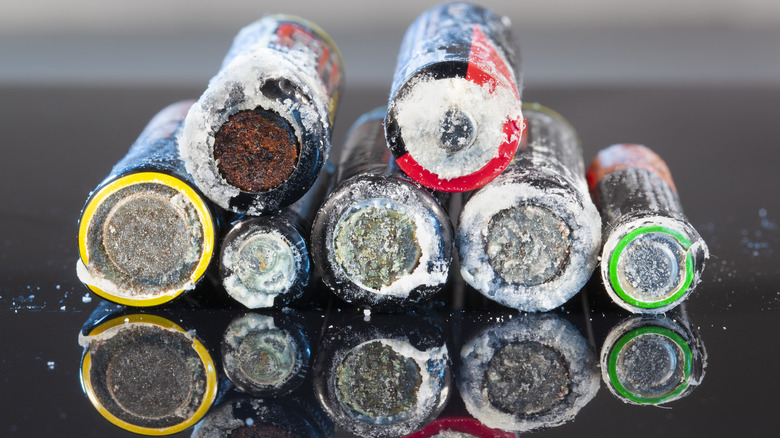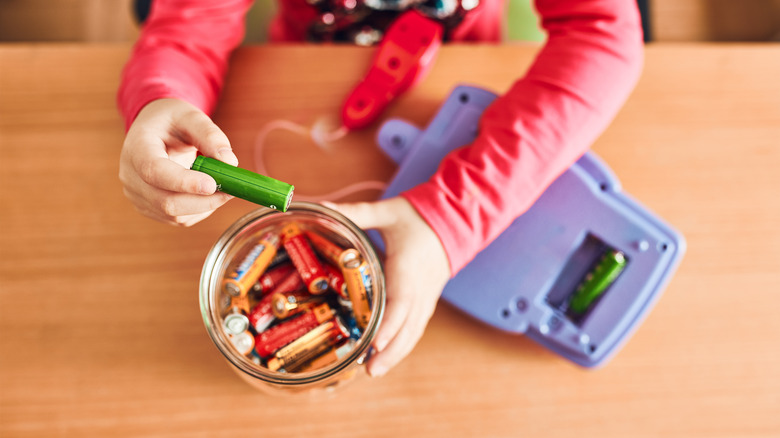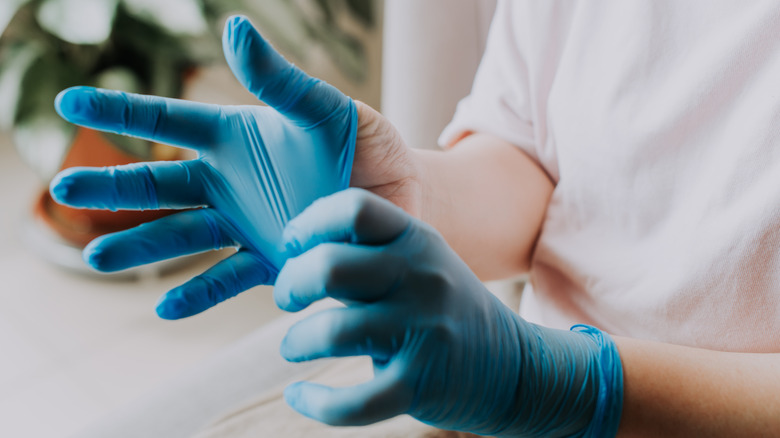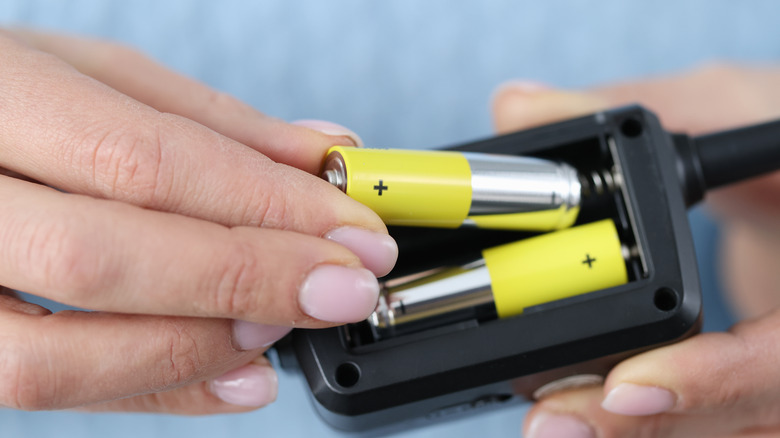Don't Let Corrosion Kill Your Gadgets: How To Clean And Protect Your Device's Batteries
While modern power systems in personal electronics and larger devices have been gradually moving toward rechargeable frameworks in the interest of sustainability, there's still a lot of disposable battery usage in today's world. Disposable batteries are primarily used for small electronics and gadgets, including things like television and garage remote controls, flashlights, mouse pads, gaming controllers, and children's toys. Compared to a few decades ago, brands build disposable batteries much tougher, but that doesn't mean they're invincible to wear and tear.
Like any portable power source, disposable batteries are susceptible to corrosion caused by the acid leaking out and crystalizing over the battery's contacts. Not only can this corrosion permanently damage your gadgets, but leaving them unattended can be extremely dangerous if it occurs in your kids' toys. Therefore, it's on you to know how to safely remove that gunk and the best practices to prevent it from forming in the first place.
How to prevent corrosion
Battery corrosion is a direct result of a battery acid leak. Assuming the batteries you're using were manufactured properly, a leak generally arises from damage or mishandling. Obviously, if you crack a battery against a solid kitchen counter, it will probably start leaking, but batteries can also be damaged in quieter, subtler ways.
One of a battery's mortal enemies is extreme hot and cold temperatures. A battery's casing is designed to withstand both modest hot and cold, but prolonged exposure to high levels of either can warp the casing and allow the acid to leak out. For both the batteries and the gadgets you use them in, keep them in an even-temperature location, out of direct sunlight or vent exposure. Additionally, if you have a toy or gadget that you're not actively using and won't be for a while, you should take the batteries out of it. It's bad enough when a battery starts leaking on its own, but if it leaks in a gadget, the gadget will also be in trouble.
In the specific case of toys, try not to keep them all in a bin if possible, as it's much harder to monitor for corrosion until it's already too late.
What you need to clean corrosion
Sometimes, despite your best efforts, corrosion will still take root within your gadgets' battery compartments. Once corrosion sprouts up, it's officially a race against time. If you can clean it out quickly, you may still be able to use the gadget, but if it's left for too long, the gadget's connectors will be damaged, and the whole thing will be completely bricked.
Before you can clean corrosion, you'll need to get some tools together. First and foremost, you need protective gloves and eyewear. Remember, we're dealing with battery acid here (emphasis on the acid). If this stuff gets on your bare skin or in your mouth or eyes, that's emergency room-worthy, so take every precaution.
For the cleaning process, you will need a neutralizing substance to dissolve the crystalized acid. For this, either white vinegar or lemon juice will work. For stubborn corrosion, you'll also want some 90% isopropyl alcohol. To apply these substances, you'll want either some cotton swabs or unused toothbrushes. Get some compressed air and plastic baggies for the final cleanup, too.
How to clean corrosion
Once you have all of your materials together, it's time to get to work. Equip your protective gear, place the affected gadget on a clean working surface, and make sure you won't be interrupted by kids or pets. This is hazardous work we're doing here.
-
Open the battery compartment on the affected device. If it has a power switch, turn it off.
-
Remove the corroded batteries and place them in a sealed plastic baggie.
-
Apply several drops of vinegar/lemon juice to a cotton swab or toothbrush.
-
Gently brush the corroded areas. The crystals will begin melting away.
-
Apply several drops of alcohol to another cotton swab or toothbrush.
-
Carefully brush the inside of the battery compartment and the contacts to remove any remaining corrosion residue.
-
Blow the compartment with compressed air to remove any loose flecks or brush fibers.
Once the corrosion has been completely cleared away, you can insert some new batteries. If you're lucky, the contacts on the gadget will still be good, and you can keep using it.
As for the corroded batteries, you can throw them away if you're in a hurry, but if possible, it's better to either drop them off at a recycling center or call for a battery recycling company pickup. You don't want those things sitting in a landfill if you can help it.



